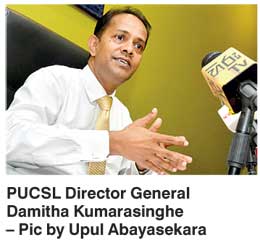Thursday Nov 14, 2024
Thursday Nov 14, 2024
Tuesday, 20 September 2016 00:04 - - {{hitsCtrl.values.hits}}
By Devin Jayasundera
Contradicting advocates of the recently-scrapped Sampur coal power plant, the Public Utilities Commission of Sri Lanka (PUCSL) yesterday said Sri Lanka could avoid energy shortages by sticking to the long-term generation plan formulated by the Ceylon  Electricity Board (CEB) and approved by the regulator but would require immediate implementation.
Electricity Board (CEB) and approved by the regulator but would require immediate implementation.
The PUCSL on Monday announced the approval of the CEB Long-Term Generation Expansion Plan (LTGEP) 2015-2034 after the Government last week confirmed it had decided not to go ahead with the coal-powered power plant in Sampur that was signed a decade ago with the Indian Government.
However, in order to avert a power crisis, the PUCSL emphasised that plants identified in the approved LTGEP for the period of 2017-2020 should be immediately constructed and operated in year 2018/2019. Under the new plan an ambitious target of 4,955 MW by year 2020 is set to boost the currently installed capacity of 3,900MW, which is a 25% increase.
These plants include two thermal power plants with a capacity of 170 MW in southern region, 105 MW gas turbines, 300 MW natural gas power plant and several renewable energy power plants with a capacity of 700 MW which includes three major hydro power plants.
The LTGEP is approved by the PUCSL on the basis that the proposed power plants would ensure energy security of the country.
“The first priority we assess in such a plan is whether we could maintain energy security in to the future. Even if we have the lowest priced plants, if we are heading in to a lapse in energy security, it’s still a major concern,” said PUCSL Director General Damitha Kumarasinghe.
The 2018/2019 period is most likely to experience an energy shortage, according to PUCSL. “In 2018-2019, we will have an issue in supplying energy if we experience a bad hydro year plus with some issues prevailing at Norochcholai, then we may have some issues. That’s what we are trying to address with the new plan with 1,200 MW plants that would be commissioned up to 2020.”
“The Sampur coal power plant was due to be commissioned from 2021-2022, so 2018-2019 is nothing to do with Sampur,” said Kumarasinghe.
For the last nine years the development of power plants was neglected with only the Kerawalapitiya power plant and few mini hydros starting construction in 2007. “That’s the vacuum that we are now facing for 2018-2019,” he professed. However Kumarasinghe optimistically said: “If we can implement the approved plan, I don’t see any issues in supplying power up to the 2021-2022 period.”
In reference to the backlash from environmentalists for further depending on coal, Kumarasinghe said: “By the end of 2020 there will be some LNG plants, a few diesel and gas turbines plus some renewables. Once that is added the share of coal will go down.”
Renewable energy has also come under severe criticism, especially mini-hydro projects. “What we understand from the Sustainable Energy Authority is that mini hydro is also in the last phase of development right now. Probably by the end of 2020 like large hydros, mini-hydros will be exhausted. On the renewable side, solar and wind will be the major forces in time to come. Solar prices have come down and wind prices have dropped drastically, even in Sri Lanka. Those have a lot of potential in providing energy in the future.”